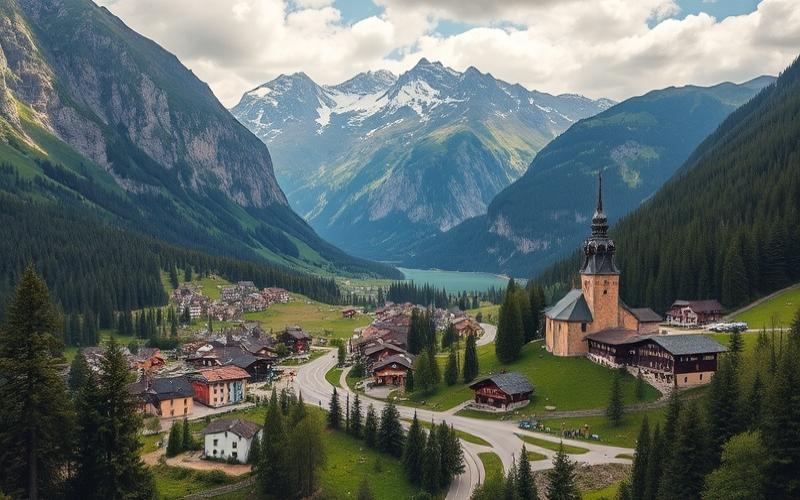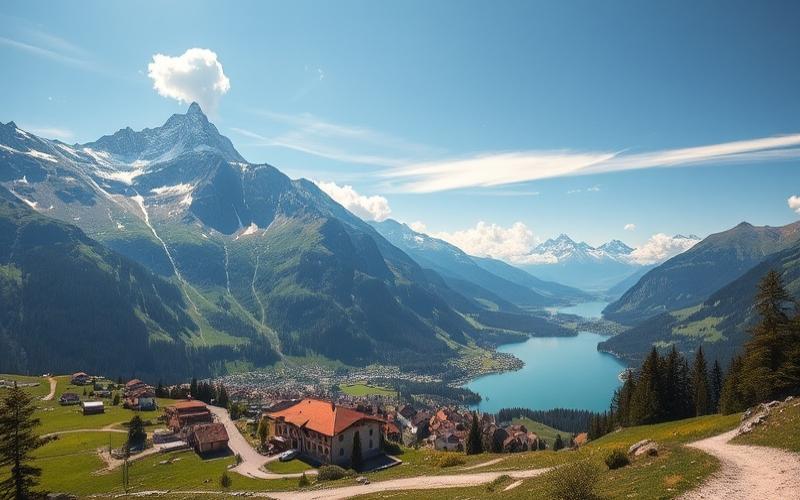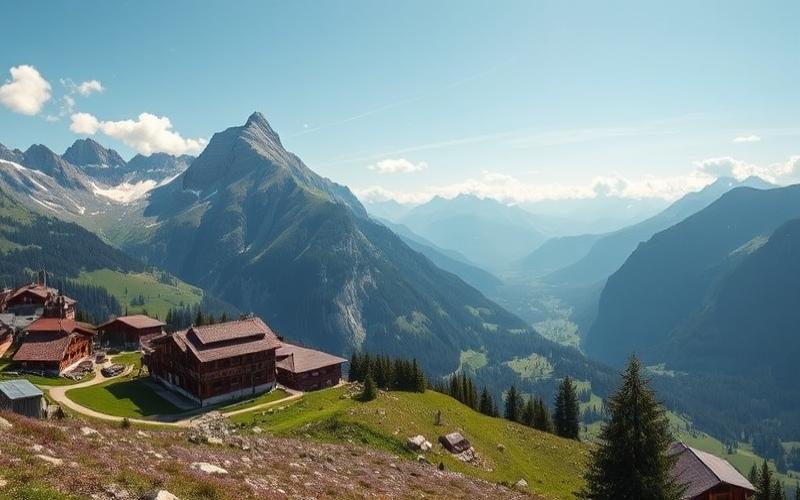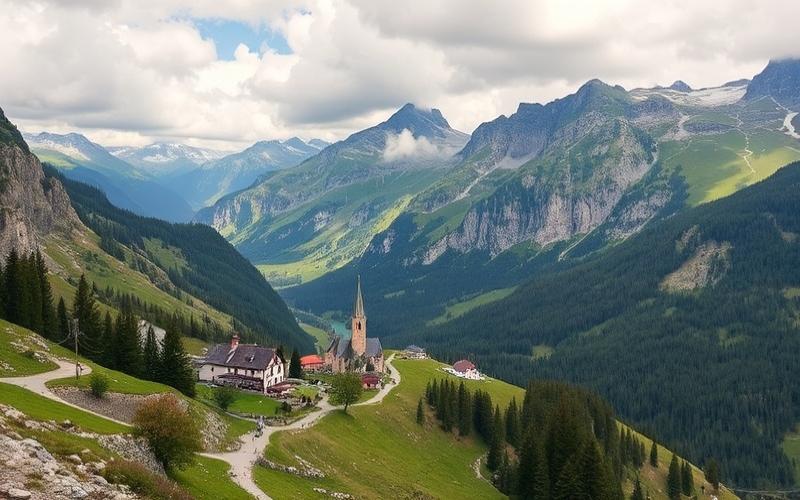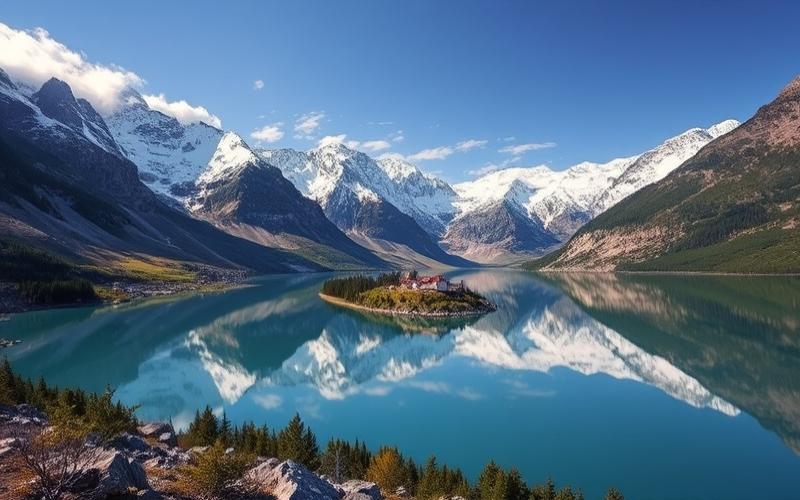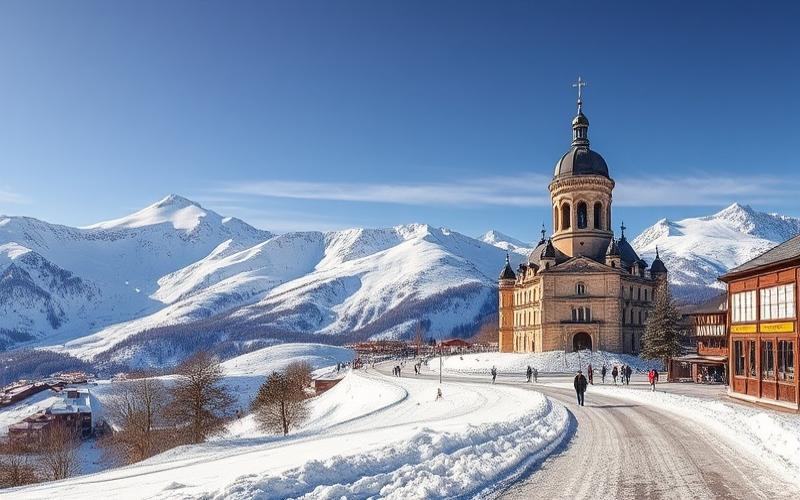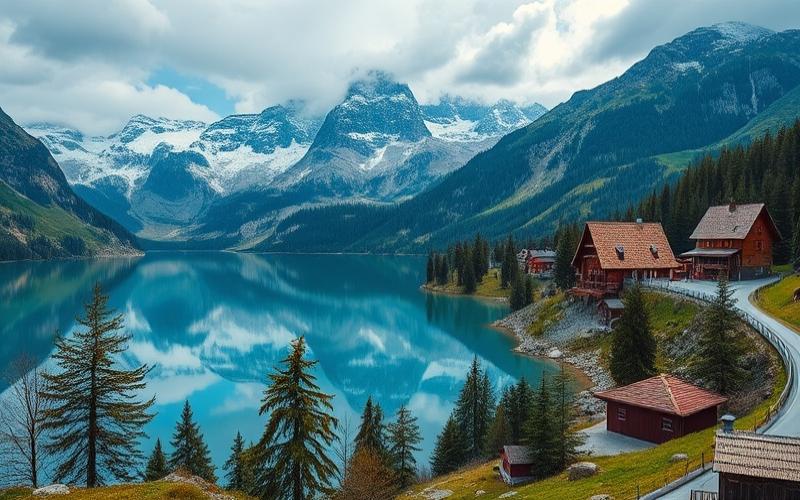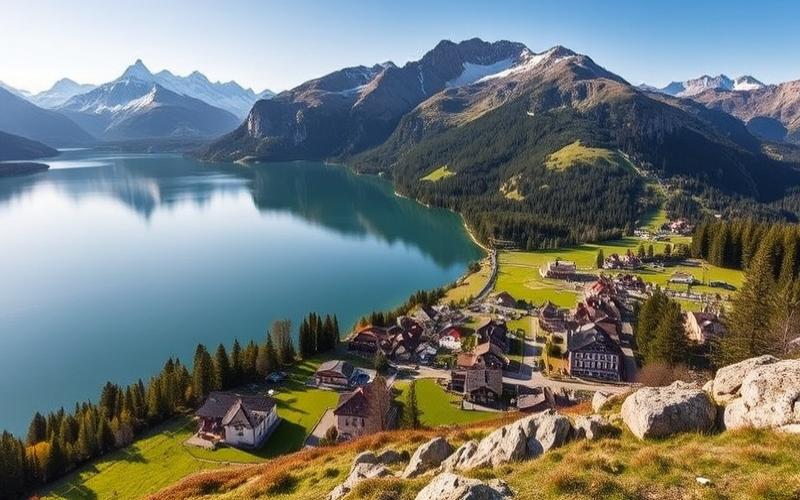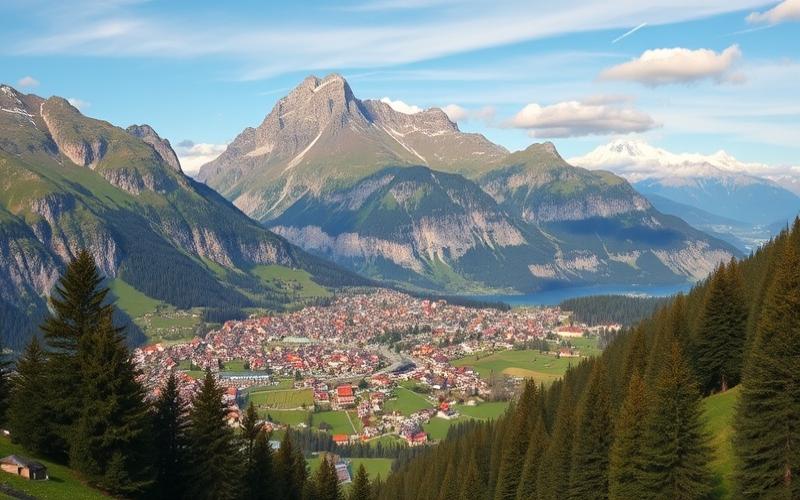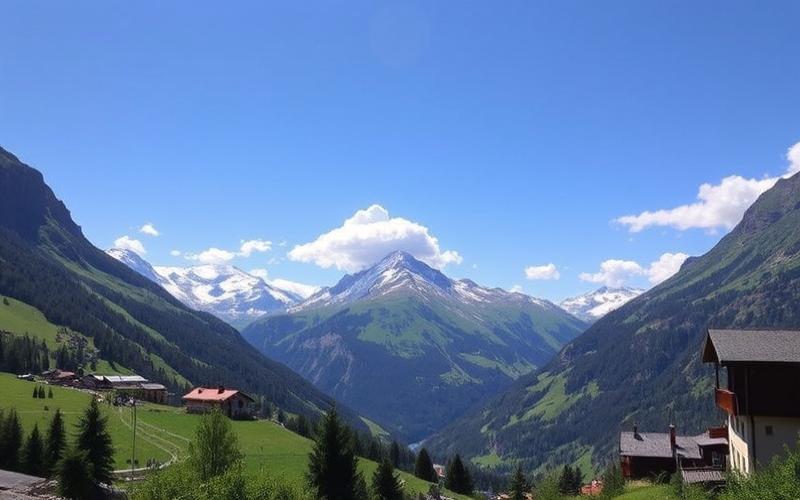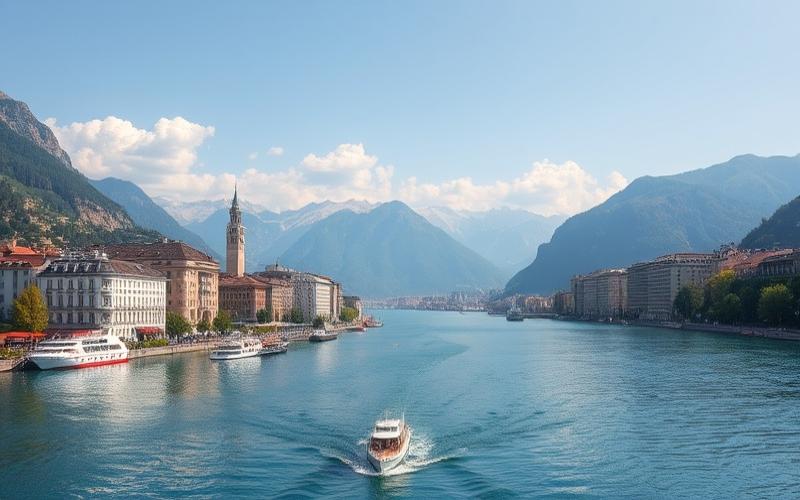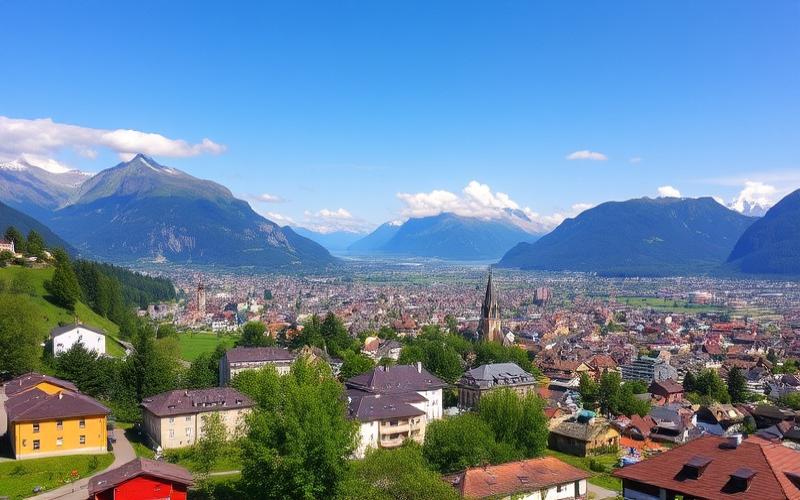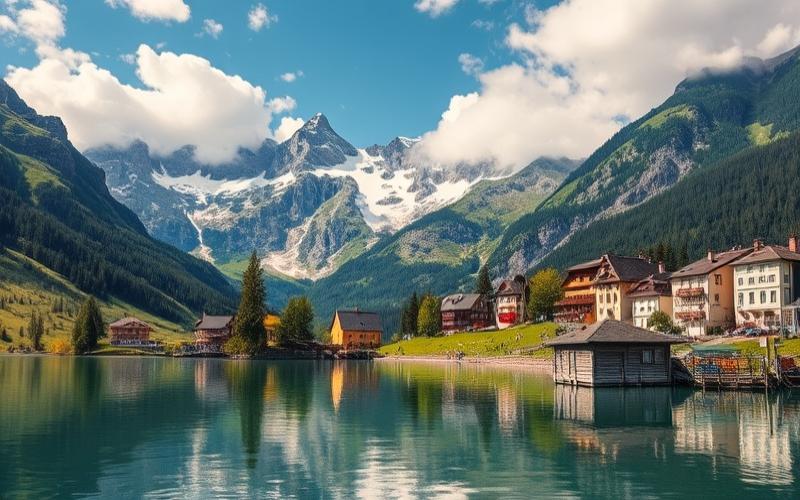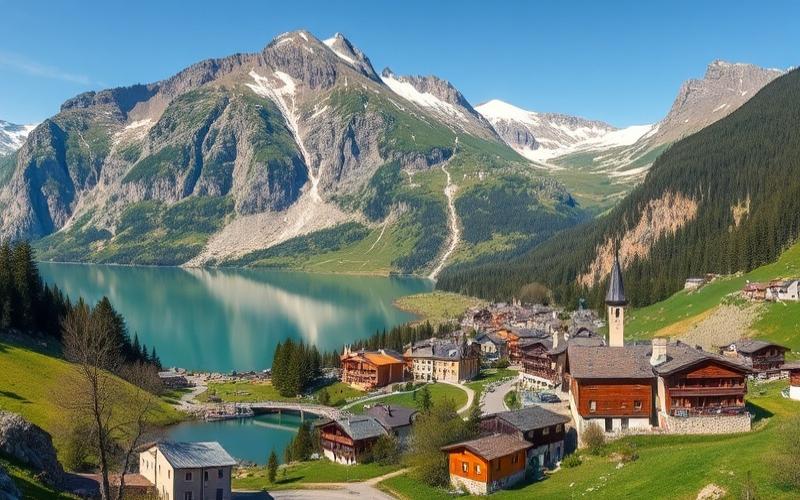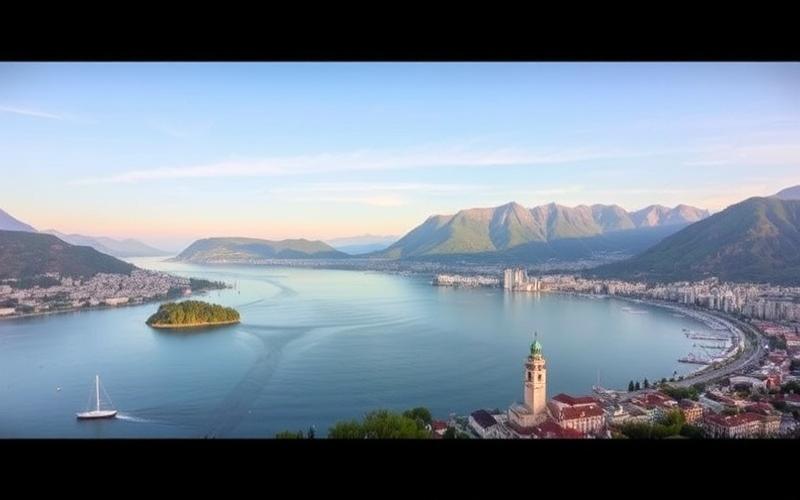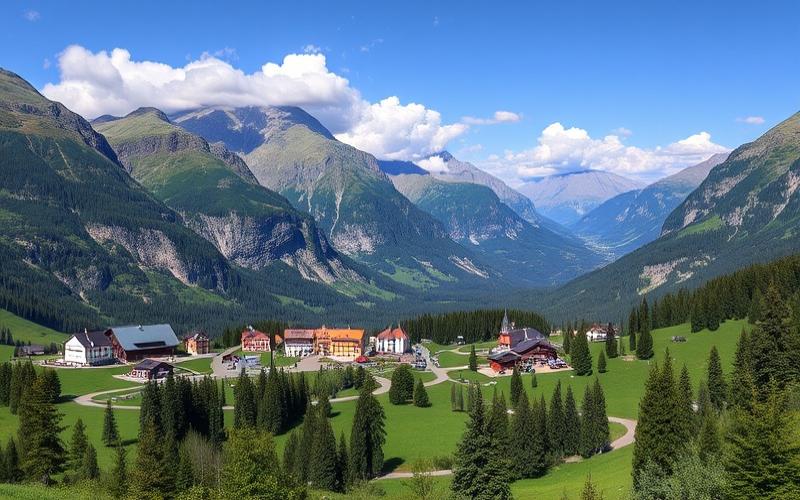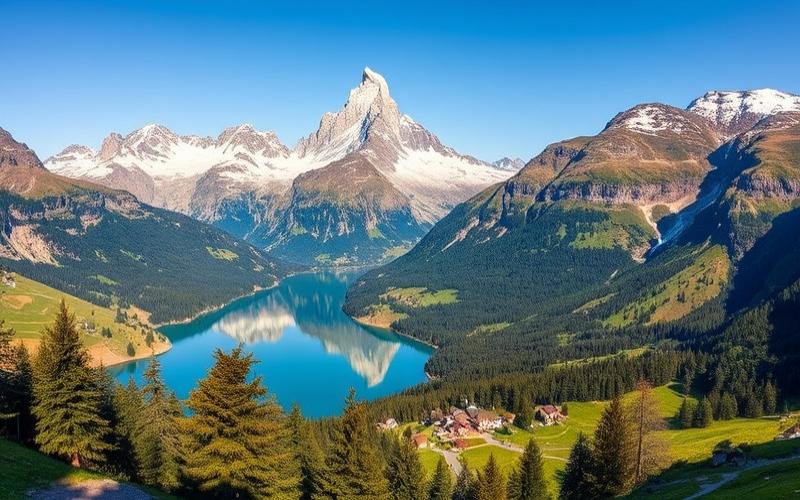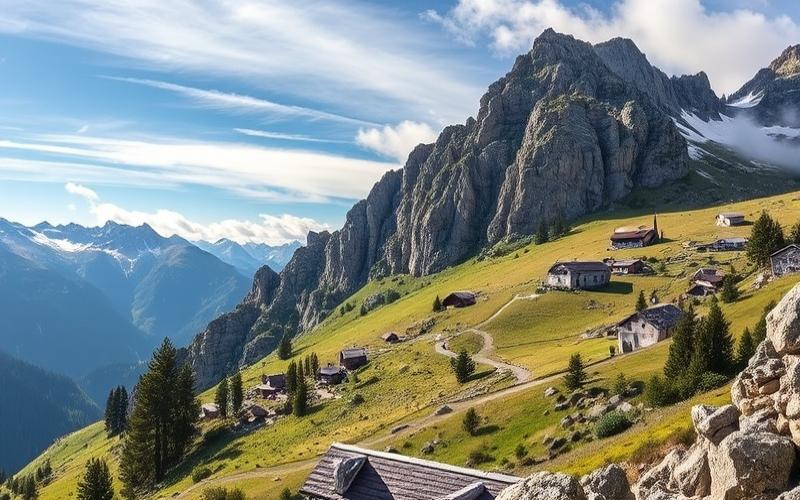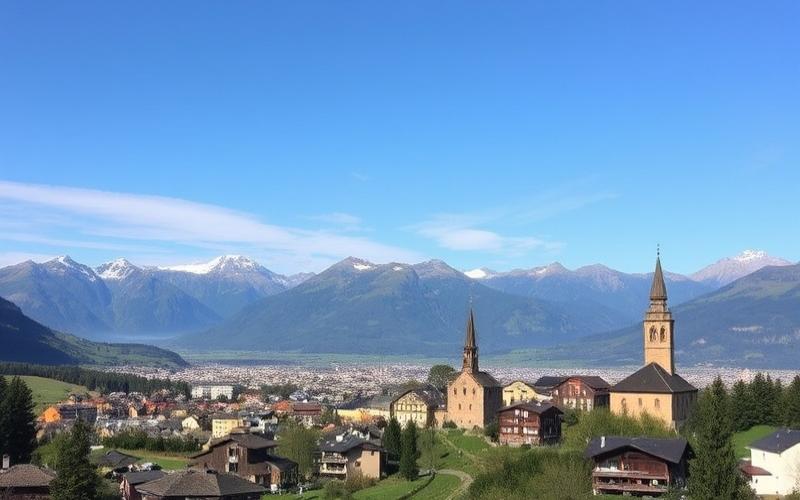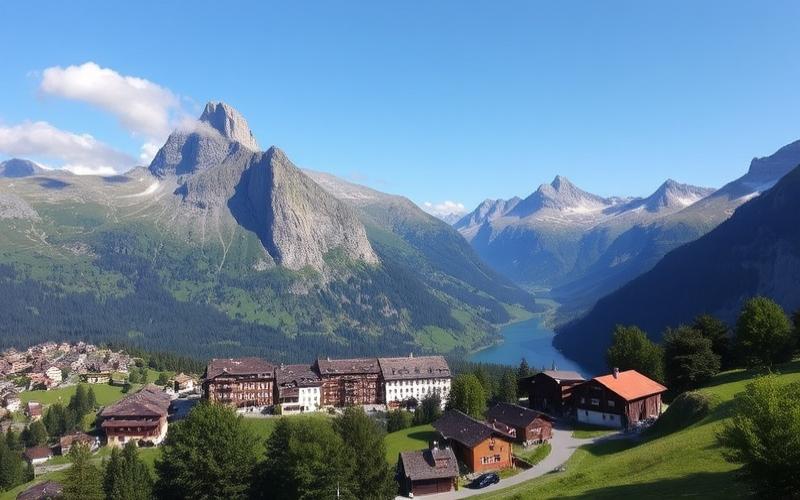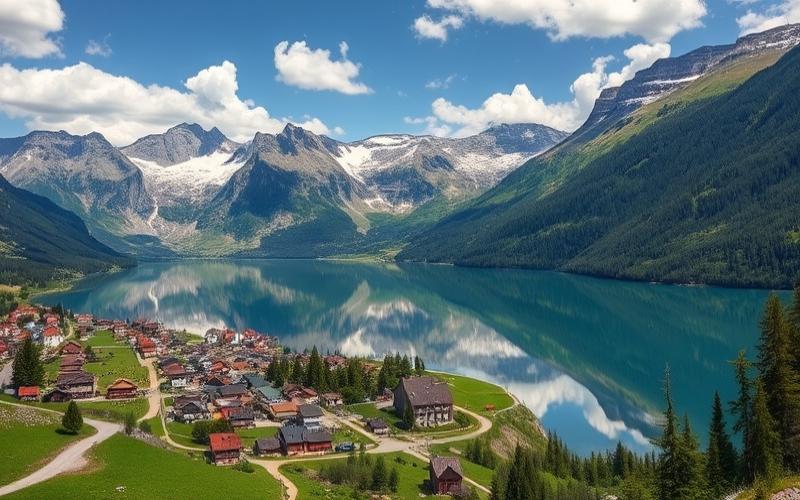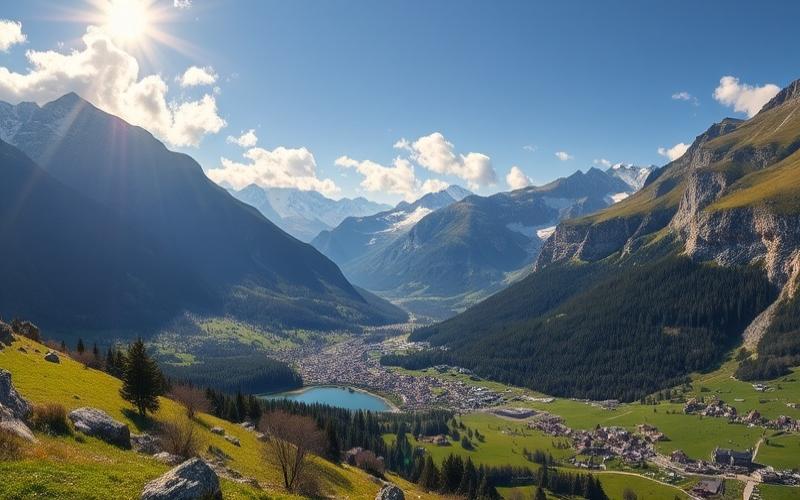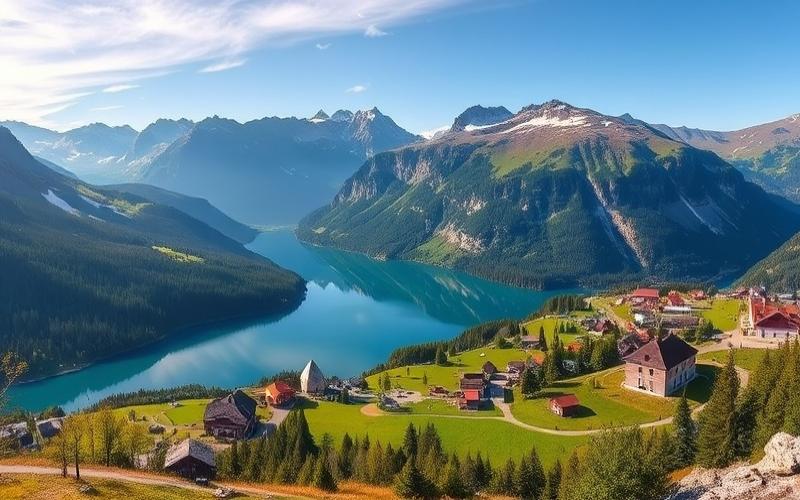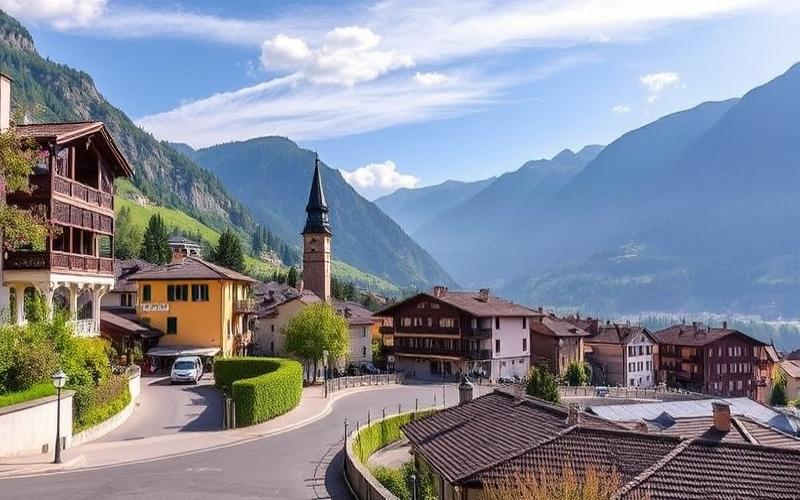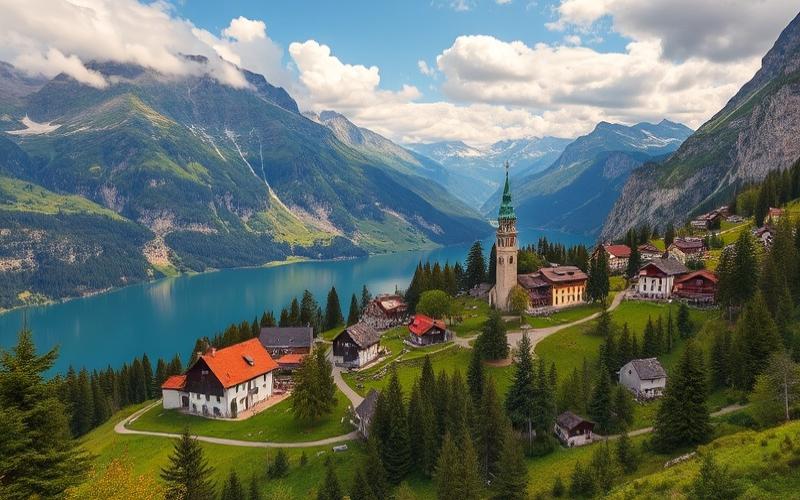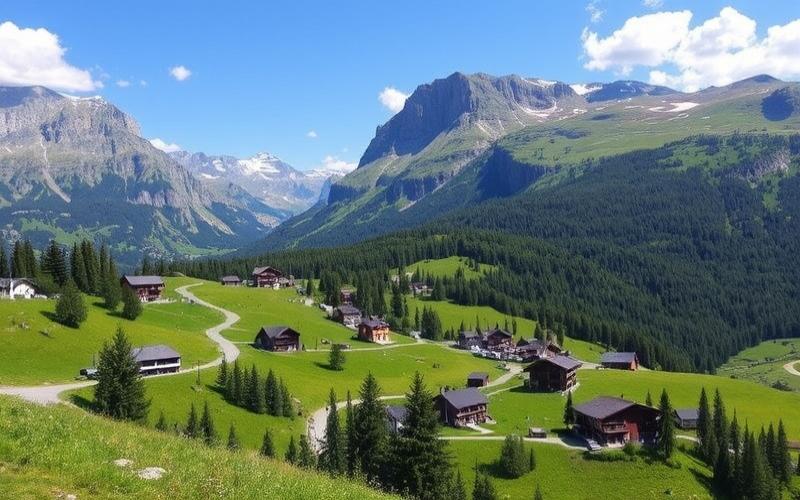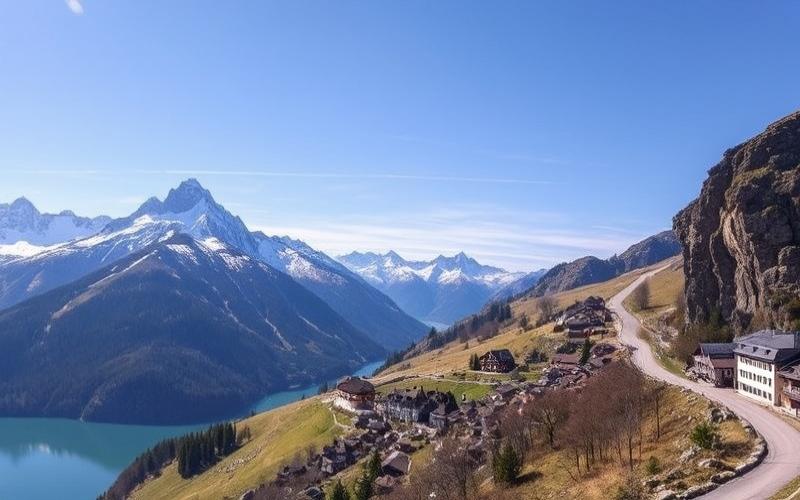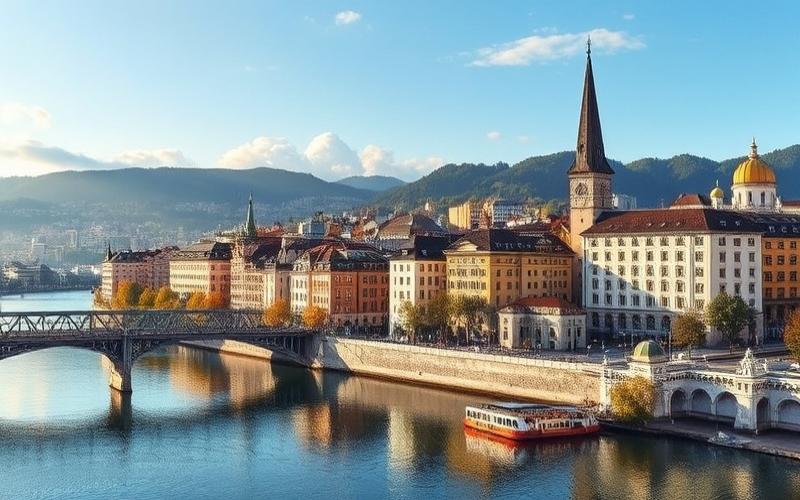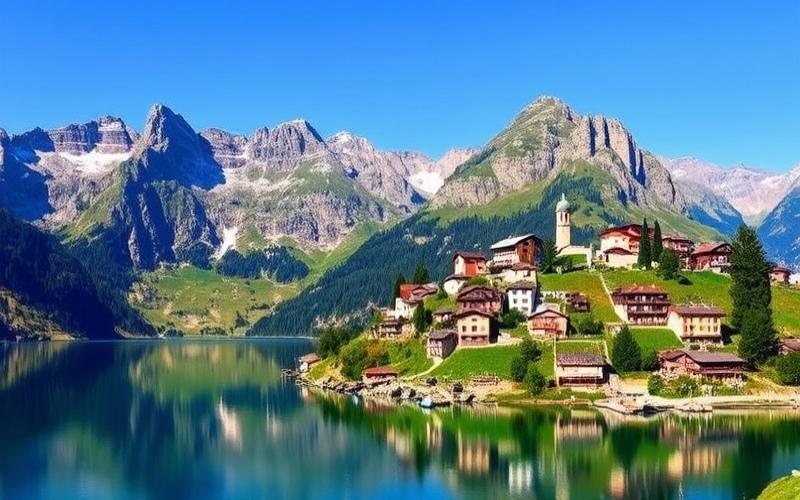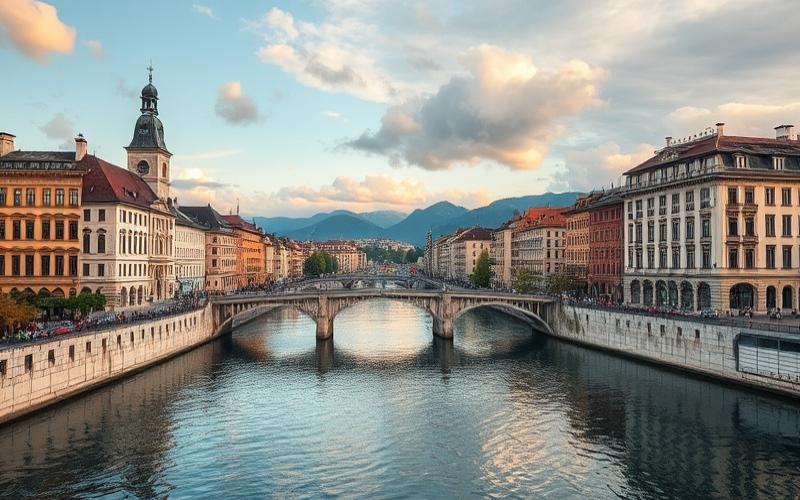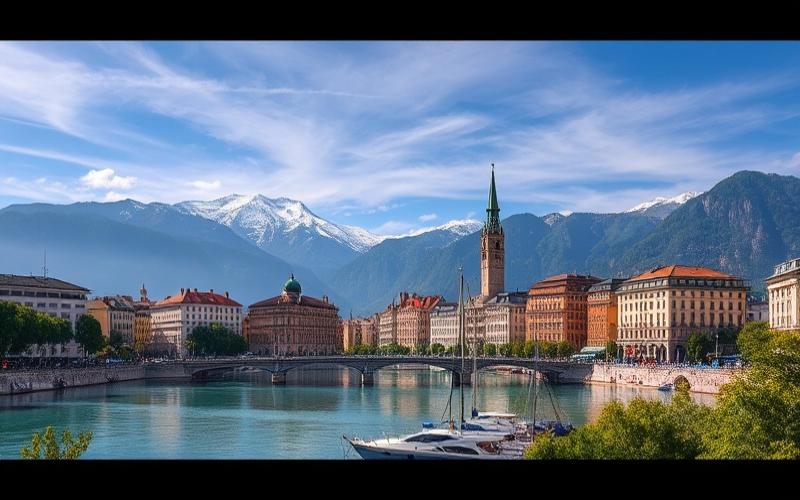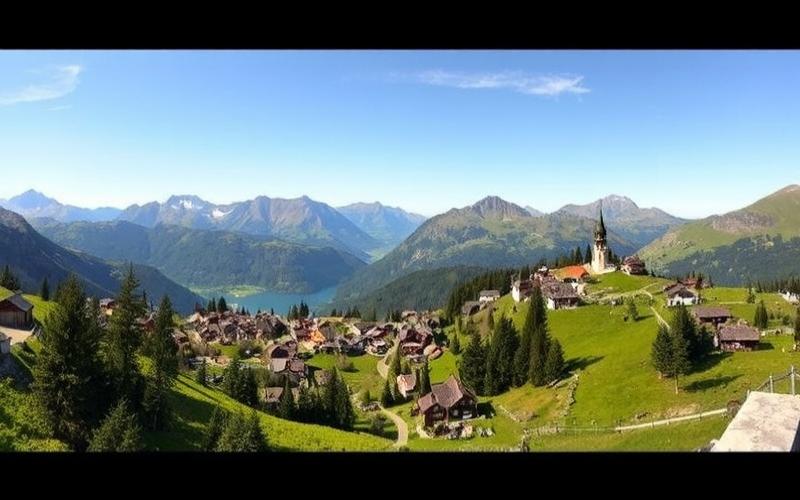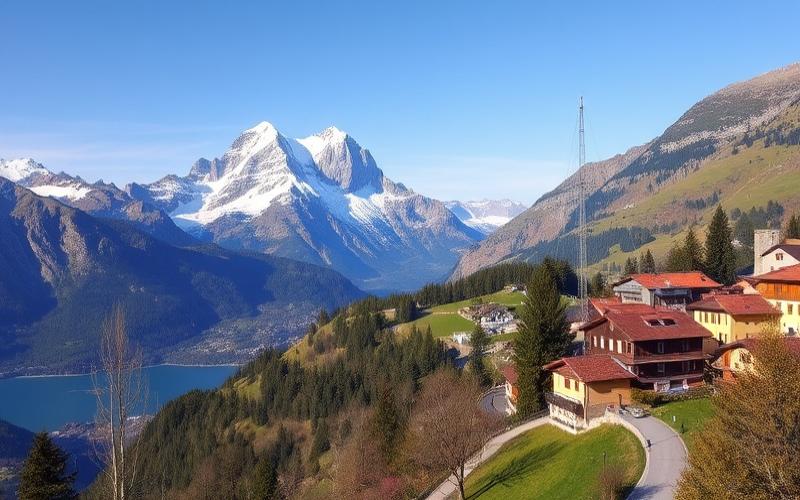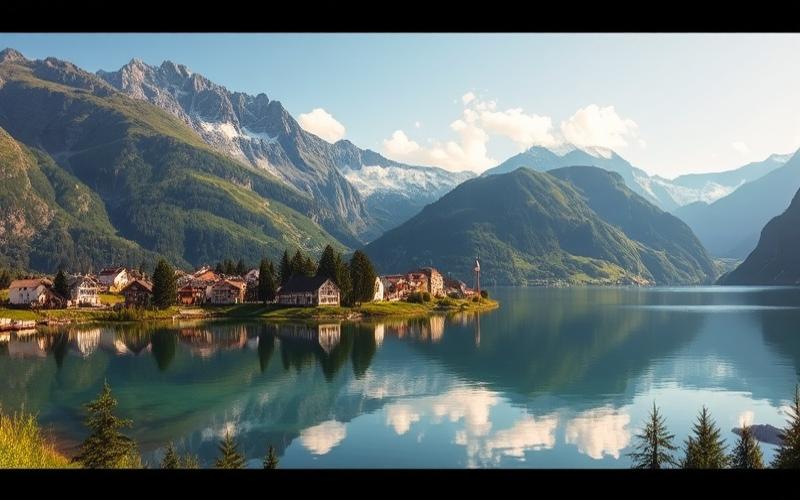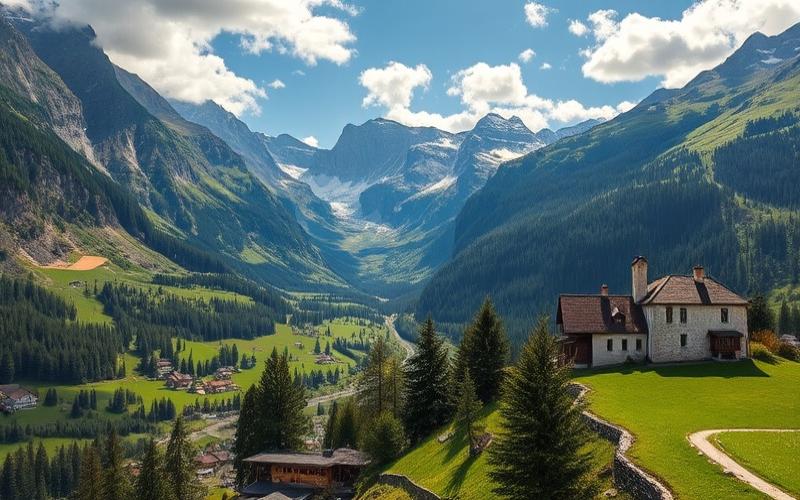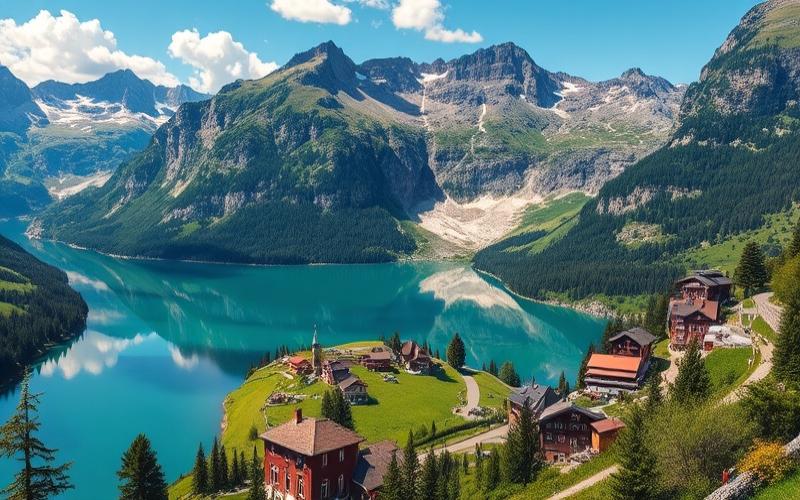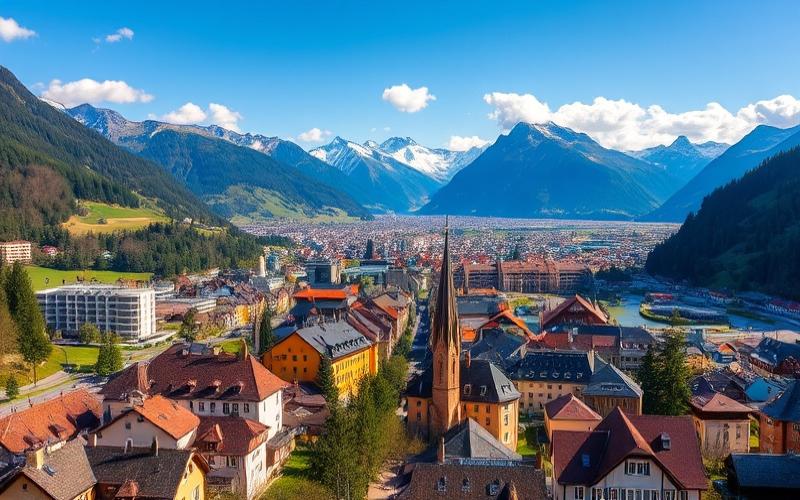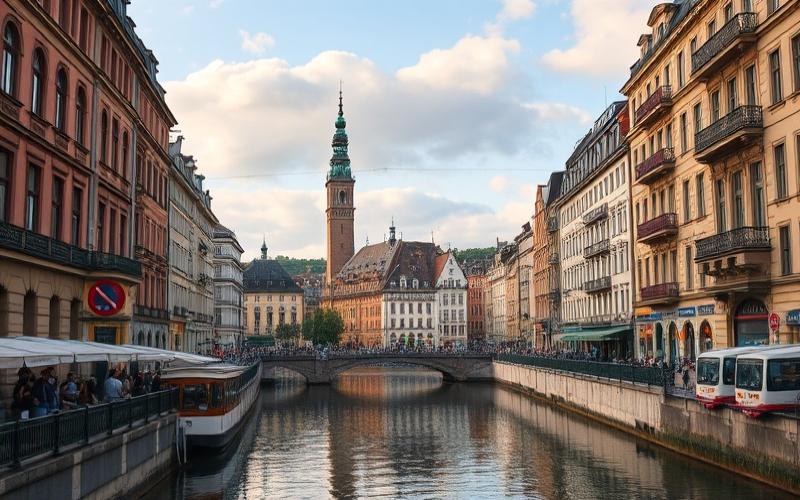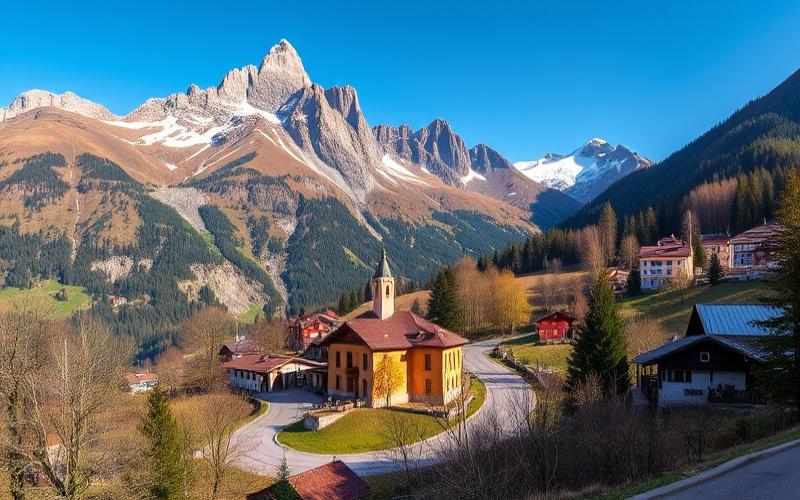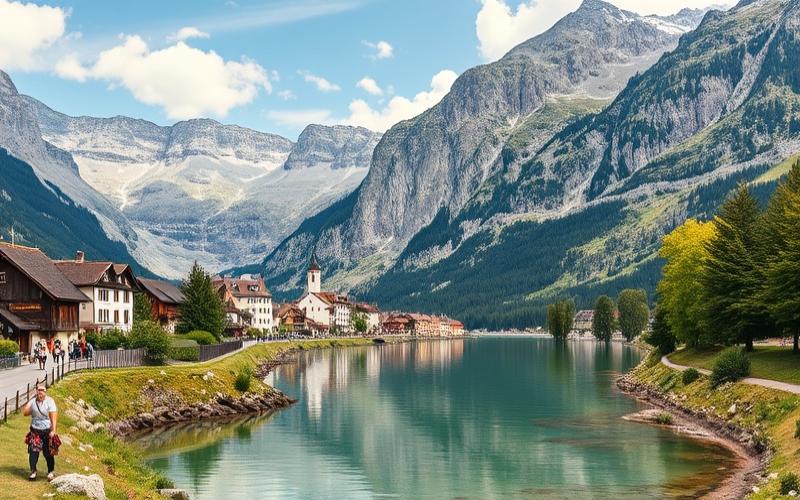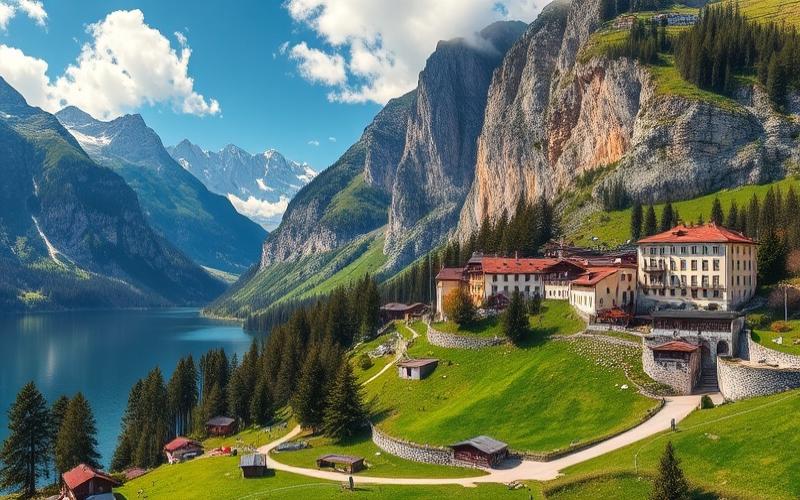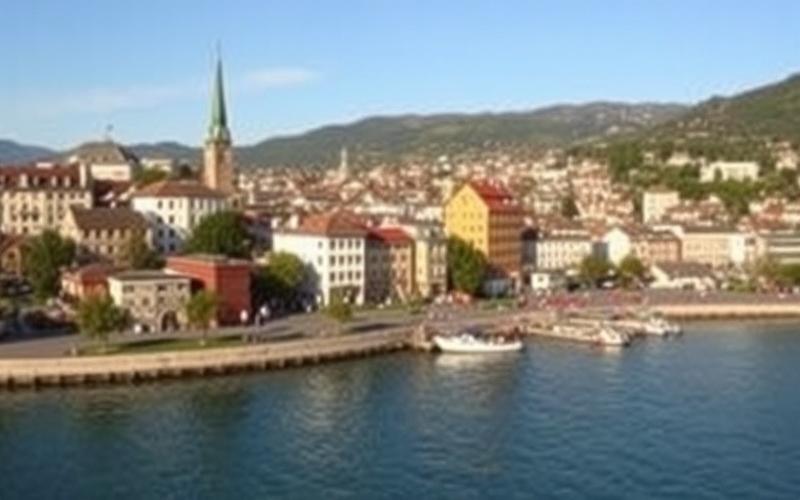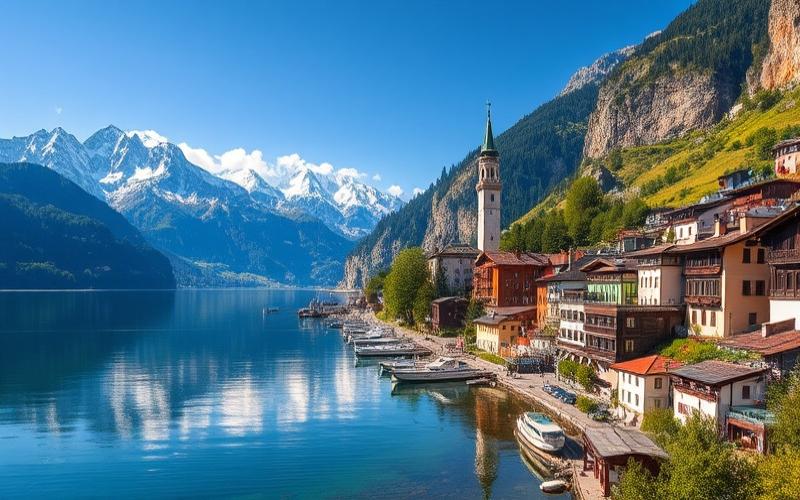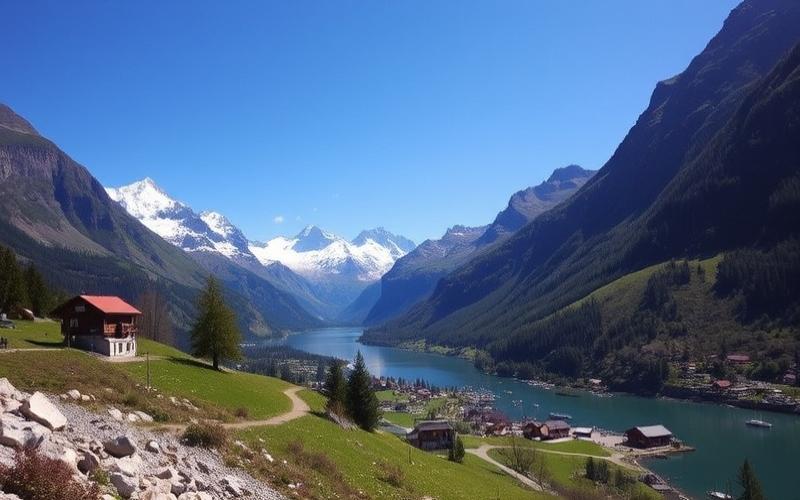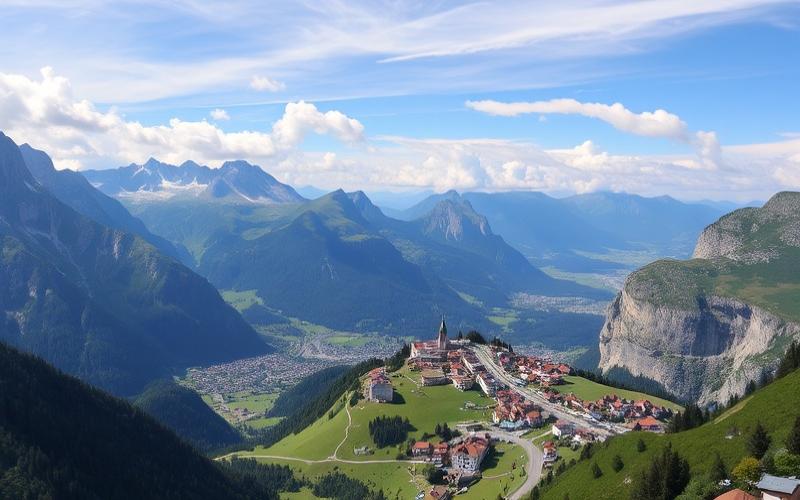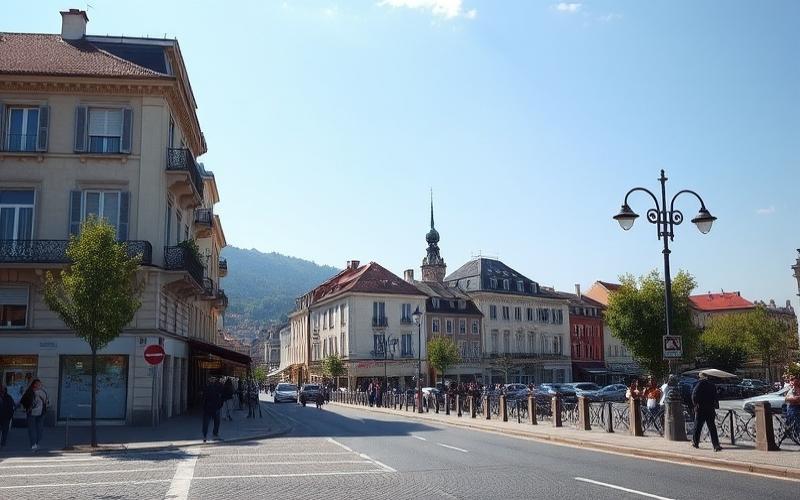
 Published on and written by Cyril Jarnias
Published on and written by Cyril Jarnias
Nestled in the heart of Switzerland’s picturesque landscapes, artist villages emanate a unique magic, blending centuries-old traditions with contemporary creative energy. These cultural microcosms, flourishing with artistic initiatives, are not just havens for creative minds; they also embody hubs of tourist and economic attraction.
While some see these places as an essential cultural investment for the region’s artistic influence, others perceive them as commercial opportunities, elevating the debate between intangible heritage and profitability.
The interaction between local artists, their vibrant works, and an increasingly curious public raises a fundamental question: are these villages merely vectors of culture, or do they represent an effective economic strategy to stimulate the local economy through tourism and the art industry?
Investing in Swiss Artist Villages: Culture or Profitability?
Investment decisions in Swiss artist villages are based on a combination of cultural, economic, and real estate factors. These villages represent both a unique appeal for art enthusiasts and an opportunity for portfolio diversification for investors.
Key Factors Influencing Investment:
- Cultural value of the site (history, artistic reputation)
- Tourism development potential
- Availability and quality of cultural infrastructure (galleries, workshops, exhibition spaces)
- Real estate profitability (price per square meter, seasonal rental potential)
- Involvement of local communities in supporting creation
Cultural Appeal and Local Impact:
Artistic communities transform villages’ images into dynamic hubs where tradition meets contemporary creation. They attract tourists, collectors, and patrons while revitalizing the local social fabric:
- Regular organization of festivals or thematic exhibitions
- Creation of galleries/artisanal shops
- Development of educational activities (residencies, workshops open to the public)
Concrete Examples in Switzerland:
| Village | Artistic Specialty | Observed Outcomes |
|---|---|---|
| Carouge (GE) | Bohemian quarter with numerous workshops | Increased commercial dynamism; strong tourist traffic |
| Saint-Ursanne (JU) | International Fantastic Film Festival | Seasonal rise in hotel stays; regional attractiveness |
| Appenzell | Living pictorial tradition | Enhanced built heritage value; national cultural influence |
Use of Funds to Support Artists & Infrastructure:
Private or public investments typically serve to renovate old properties to create spaces suited to artistic needs: shared workshops, subsidized residencies, or multipurpose areas. Some projects also include:
- Grants for young creators
- Direct funding for major events generating tourist flows
- Technological modernization of communal equipment
Possible Returns on Investment:
The balance between culture and profitability is illustrated through various economic levers:
Potential Sources of Direct/Indirect Profitability:
- Rapid increase in land value due to soft gentrification induced by artistic growth
- High rental income during major events or peak tourist seasons
- “Showcase” effect: overall boost to local commerce (restaurants/hospitality/crafts)
Expert/Investor Perspectives:
“The relative stability and low correlation with traditional financial markets make art a relevant complement to classic investments such as stocks or real estate… The Artprice 100 index has shown an average performance higher than the S&P 500 over the past twenty years.”
Innovative tools like co-investment now allow broader access to collective funding for artistic works or infrastructure—each project being selected based on both historical and financial criteria.
The debate remains open: while the primary purpose remains cultural—preserving local identity, creative transmission—many investors now emphasize that these initiatives also offer tangible economic returns driven by tourism growth structured around major artistic events.
Sustainable success therefore depends as much on the cultural dynamism offered as on the ability to transform this vitality into concrete benefits for the entire surrounding region.
Good to Know:
Investing in Swiss artist villages presents both cultural appeal and profitability prospects, influenced by factors such as the thriving art scene and commitment to cultural infrastructure. Renowned villages like Carouge and Stein am Rhein illustrate this duality by allocating funds to artist residencies and galleries that enrich local life while attracting tourists. Returns on investment include increased tourism through regular artistic events contributing to the local economy. Experts note that although the primary goal is often cultural, the economic gains resulting from the growth of artistic and tourist activities are significant, offering investors a unique blend of cultural enjoyment and financial benefits.
The Rise of Creative Eco-Villages in Switzerland
The rise of creative eco-villages in Switzerland illustrates the growing search for sustainable living models, reconciling ecological concerns with artistic dynamics. These places increasingly attract artists wishing to settle in an environment that is both inspiring and nature-respecting, fostering creative expression within an engaged community.
Examples of Swiss Eco-Villages Combining Ecology and Creativity
| Name | Main Characteristics | Artistic/Community Initiatives |
|---|---|---|
| La Smala | 3 sites over 35 km, participatory governance, bioclimatic projects (earthships), tribe of supportive artists | Organization of cultural and creative activities |
| Écovillage en Gruyère | Evolving project focused on integrated ecology | Collective efforts to experiment with alternative lifestyles |
| GEN-Switzerland Network | 21 connected intentional communities | Seasonal festivals, collaborative workshops |
Local initiatives play a decisive role: they support these communities through regular organization of festivals (such as the GEN-Switzerland spring festival or the Jurtendorf summer camp), community living training, and networking via the Global Ecovillage Network. These events strengthen social bonds while stimulating cultural innovation around sustainable development.
Potential Economic Benefits:
- Increased tourist appeal through authentic offerings based on ecological and artistic discovery.
- Local economic stimulation through regular organization of public workshops, organic markets, or cultural events.
- Direct and indirect job creation in sustainable agriculture, crafts, or tourist hospitality sectors.
- Development of short food supply chains benefiting local producers.
Eco-villages actively contribute to promoting an ecological lifestyle while valuing rich cultural diversity. They thus become showcases of solidarity-based living where each member brings their artistic and practical skills to serve the collective.
In the Swiss debate on cultural investment versus economic profitability, these innovative structures open a middle path: their model proves that cultural dynamism can align with local financial viability. Eco-villages show that investing in the creative social fabric is not incompatible with tangible economic returns—whether through alternative tourism or locally produced sustainable goods—while offering a concrete response to contemporary challenges related to ecological transition.
Good to Know:
In Switzerland, the rise of creative eco-villages is establishing itself as a sustainable living model, attracting many artists seeking an inspiring setting. Notable examples include L’Aubier in Neuchâtel and the village of Auenstein, which harmoniously integrate ecology and creativity. These villages benefit from local support, such as grants for community art projects and collaborations with cultural institutions. Economically, these eco-villages boost eco-responsible tourism and revitalize the local economy, serving as attractive hubs for visitors seeking ecological and artistic discoveries. They also spark debate on the scope of cultural investment versus economic profitability, highlighting their crucial role in promoting a lifestyle that is both ecological and culturally enriching in Switzerland.
Reconnecting with Heritage: Renovations of Artistic Farms
The renovation of traditional farms lies at the heart of the renaissance of artist villages in Switzerland, where these rural buildings become cultural and social catalysts. Their transformation into workshops, galleries, or cultural centers both preserves Swiss architectural heritage and energizes local communities.
Concrete Examples of Transformed Farms:
- In Felsberg (GR), the Hof & Hist project by Modunita architects illustrates how a barn and a village house were redesigned to form a coherent whole. The intervention involved removing successive additions to expose the original vernacular architecture, while adapting the spaces to their new artistic uses.
- In the protected hamlet of Impart (Fribourg), a farm was entirely dismantled and rebuilt with its preserved elements, integrating modern energy solutions like a Minergie-P label and photovoltaic panels. The traditional Fribourg wellhead was reinterpreted to now serve as a light well in the bathroom.
Cultural and Economic Impacts on Local Communities:
- Enhancement of rural heritage: Renovations highlight local history while creating inspiring places for artists and visitors.
- Creation of a cultural hub: Shared workshops, galleries open to the public, or artist residencies attract tourists, art lovers, and professionals.
- Economic stimulation: These projects boost the local economy through tourist influx, job creation related to construction, and recurring cultural activities (exhibitions, festivals).
- Social cohesion: Residents are involved in the process through public consultations or volunteer participation during construction.
Initiatives Supporting These Renovations:
| Type | Involved Actors | Actions Taken |
|---|---|---|
| Governmental | Cantonal heritage services | Technical/regulatory support; targeted subsidies |
| Private | Specialized architects; foundations | Funding; architectural/artistic expertise |
| Associative | Local associations | Citizen mobilization; event organization |
Heritage Preservation & Cultural Dynamism:
Projects rely on a dialogue between architectural history—meticulous conservation of typical facades or frameworks—and technical innovation (increased energy efficiency). This approach allows not only for intergenerational transmission of built know-how but also its adaptation to contemporary needs related to artistic activity.
By revaluing Swiss farms as living places dedicated to contemporary creation, these initiatives combine sustainable heritage preservation and local cultural influence.
Good to Know:
In Switzerland, the renovation of traditional farms plays a crucial role in the renaissance of artist villages, transforming these structures into inspiring workshops, galleries, or cultural centers. For example, in the canton of Vaud, the farm of La Sarraz has been transformed into a vibrant artistic space, attracting tourists and artists, thus contributing to the local economy. These renovations, supported by government initiatives such as Pro Helvetia, as well as private patrons, not only preserve Swiss architectural heritage but also revitalize communities by stimulating their cultural dynamics. Heritage restoration projects, by integrating authentic materials and traditional construction methods, offer not only aesthetic continuity with the past but also create economic opportunities through an influx of visitors and artist residencies, demonstrating a successful convergence between conservation and cultural innovation.
Swiss Artistic Communities and the Real Estate Market
The presence of an artistic community in Swiss villages acts as a true catalyst on the local real estate market. The arrival of artists often transforms the village’s image, giving it a new appeal that impacts residential and commercial demand.
Economic and Social Impacts of Artists Settling
- Increase in real estate demand linked to the influx of visitors, collectors, and art enthusiasts.
- Rise in price per square meter in areas invested by artistic communities.
- Revitalization of local businesses (cafés, galleries, workshops).
- Creation of indirect jobs in the cultural tourism and crafts sectors.
| Observed Effects | Consequences for the Real Estate Market |
| Mass arrival of artists | Rapid increase in land value |
| Organization of festivals | Punctual or sustained growth |
| Opening of galleries | Urban transformation |
Municipal Policies: Support or Hindrance?
Some municipalities encourage this phenomenon through:
- Making vacant premises available at preferential rates for workshops or artist residencies.
- Specific subsidies for in-situ artistic creation.
Others limit these dynamics via:
- Strict regulations on the use of heritage buildings.
- Dissuasive local taxation for non-resident newcomers.
Concrete Examples in Switzerland
Villages like Romainmôtier (Vaud) or Carona (Ticino) have seen their real estate appeal increase following the gradual settlement of visual artists, ceramicists, or musicians. These localities are now identified as regional cultural hubs: this has generated a measurable rise in real estate transactions as well as a notable evolution in the sociological profile of residents.
European Comparison
In France, the “1 building, 1 artwork” program encourages private developers to systematically integrate an original work in any new residential or tertiary construction. This policy strongly contributes to architectural and land valuation while energizing the national art scene. In Germany and the Netherlands as well, several municipalities have long favored urban creative clusters to revive neglected neighborhoods.
Cultural Investment vs Economic Lever?
Artistic emergence can be seen as a cultural investment as long as it durably enriches the local intangible heritage. But it is undeniable that this movement also constitutes a powerful economic lever—sometimes at the risk of increased speculation—for many public and private actors involved in Swiss rural real estate.
Artistic communities thus profoundly transform local dynamics: they revitalize socially while reshaping the real estate market financially—constantly oscillating between shared cultural ambition and rational pursuit of profitability.
Good to Know:
In Switzerland, the presence of artistic communities in villages like Carouge or Romainmôtier often increases real estate appeal, sometimes leading to price hikes due to heightened demand for homes with heritage or aesthetic value. Artists, attracted by cheaper and often more inspiring spaces, can revitalize areas, enhancing their cultural and economic appeal, but also pose a risk of gentrification. Some Swiss municipalities implement policies to support artist settlement, offering subsidies or affordable housing, while others may restrict developments to preserve local identity. Compared to practices in Germany or France, where similar programs exist, Switzerland seems to favor more localized initiatives specifically adapted to each region’s dynamism. The transformation of these villages raises the question of whether these areas become more long-term cultural investments or primarily serve immediate economic returns.
Disclaimer: The information provided on this website is for informational purposes only and does not constitute financial, legal, or professional advice. We encourage you to consult qualified experts before making any investment, real estate, or expatriation decisions. Although we strive to maintain up-to-date and accurate information, we do not guarantee the completeness, accuracy, or timeliness of the proposed content. As investment and expatriation involve risks, we disclaim any liability for potential losses or damages arising from the use of this site. Your use of this site confirms your acceptance of these terms and your understanding of the associated risks.

